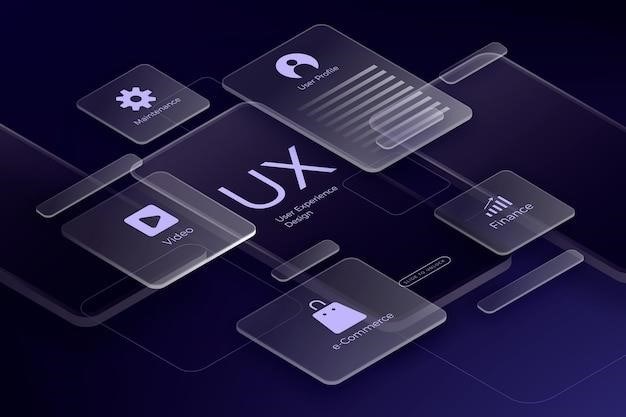
Security management isn’t just about locks and passwords; it’s about weaving a dynamic shield of proactive defense, adapting to the ever-shifting threat landscape.
Proactive Threat Monitoring⁚ The Sentinel’s Gaze
Imagine a sentinel, tirelessly scanning the horizon, anticipating the enemy’s next move. Proactive threat monitoring is that digital sentinel, its gaze fixed on the swirling currents of network traffic, system logs, and endpoint activity. It’s not just about detecting intrusions; it’s about understanding the subtle anomalies, the whispers of malicious intent that precede a full-blown attack. By leveraging advanced analytics and machine learning, we transform raw data into actionable intelligence, empowering security teams to neutralize threats before they can wreak havoc. This constant vigilance, this unwavering gaze, is the cornerstone of a robust security posture.
Dynamic Threat Analysis⁚ Deciphering the Enemy’s Code
Like codebreakers in a high-stakes espionage thriller, dynamic threat analysis delves into the heart of malicious software, dissecting its intricate mechanisms. Sandboxing suspicious files, detonating potential exploits in controlled environments, and meticulously mapping attack vectors allow us to understand the enemy’s tactics, techniques, and procedures (TTPs). This deep dive into the adversary’s playbook empowers us to develop targeted defenses, predict future attacks, and ultimately, turn the tables on those who seek to exploit our vulnerabilities. We decipher their code, turning their strengths into our advantage.
Adaptive Incident Response⁚ Mastering the Art of Counterattack
Incident response isn’t merely reacting; it’s an art of calculated counter-maneuvers. Like a seasoned chess player anticipating their opponent’s every move, adaptive incident response prepares us for the inevitable breach. It’s about having a well-rehearsed plan, a skilled team ready to deploy, and the tools to quickly contain, eradicate, and recover. More than just patching the holes, it’s learning from each incident, evolving our defenses, and transforming every attack into an opportunity to strengthen our security posture. We master the art of the counterattack, turning setbacks into stepping stones.
Continuous Security Awareness Training⁚ Empowering the Human Firewall
The strongest fortress can be breached by a single unlocked door. Human error remains a significant vulnerability, but it’s also our greatest strength. Continuous security awareness training transforms employees from potential weak points into vigilant guardians, empowering them to be the human firewall. Through engaging education, simulated phishing exercises, and real-world scenarios, we cultivate a culture of security consciousness. This isn’t just about ticking boxes; it’s about fostering a mindset of proactive defense, making security second nature, and building a resilient human shield against ever-evolving threats.
Robust Vulnerability Management⁚ Fortifying the Digital Fortress
Even the most formidable fortress has its cracks. Robust vulnerability management is the art of finding and sealing those fissures before they can be exploited. It’s a continuous cycle of scanning, assessing, and patching, strengthening the digital fortress against relentless attacks. We don’t just react to known vulnerabilities; we proactively hunt for hidden weaknesses, employing automated tools and expert analysis. This vigilant approach, combined with timely patching and mitigation strategies, ensures our defenses remain impenetrable, safeguarding critical assets and maintaining a robust security posture.
Q⁚ Is security management just about technology?
A⁚ Absolutely not! While technology plays a vital role, security management is a holistic approach encompassing people, processes, and technology. It’s about building a culture of security awareness, implementing robust policies, and leveraging technology to enforce and enhance these measures.
Q⁚ How often should we conduct vulnerability assessments?
A⁚ Vulnerability assessments should be a continuous process, not a one-time event. Regular scans, automated where possible, should be complemented by periodic penetration testing to simulate real-world attacks. The frequency depends on the organization’s risk profile and industry regulations, but a proactive approach is always recommended.
Q⁚ What’s the biggest security threat organizations face today?
A⁚ The human element remains the weakest link. Phishing attacks, social engineering, and insider threats can bypass even the most sophisticated technological defenses. Continuous security awareness training, coupled with robust access controls and monitoring, is crucial to mitigating these risks.
Q⁚ How can we measure the effectiveness of our security management program?
A⁚ Key performance indicators (KPIs) like the number of detected vulnerabilities, time to remediation, and incident response time can provide valuable insights. Regular security audits and penetration testing also offer a crucial external perspective, helping identify gaps and areas for improvement.
FAQ
Q⁚ Is cloud security someone else’s problem?
A⁚ Definitely not! While cloud providers are responsible for securing their infrastructure, the security in the cloud – your data, applications, and configurations – is your responsibility. Understanding the shared responsibility model is paramount for effective cloud security management.
Q⁚ What’s the best way to manage third-party security risks?
A⁚ Thorough due diligence is key. Assess potential vendors’ security posture, establish clear contractual obligations regarding security practices, and continuously monitor their compliance. Don’t just check the box; cultivate a collaborative security partnership;
Q⁚ How can we stay ahead of emerging threats?
A⁚ Threat intelligence is your crystal ball. By staying informed about the latest attack vectors, vulnerabilities, and threat actor tactics, you can proactively strengthen your defenses and anticipate potential attacks. Engage with threat intelligence communities and leverage security information and event management (SIEM) systems for real-time monitoring.
Q⁚ What’s the ROI of security management?
A⁚ Security isn’t a cost center; it’s an investment. While calculating a precise ROI can be challenging, the cost of a security breach – financial losses, reputational damage, regulatory fines – far outweighs the investment in proactive security management. Frame security as a business enabler, not a burden.







